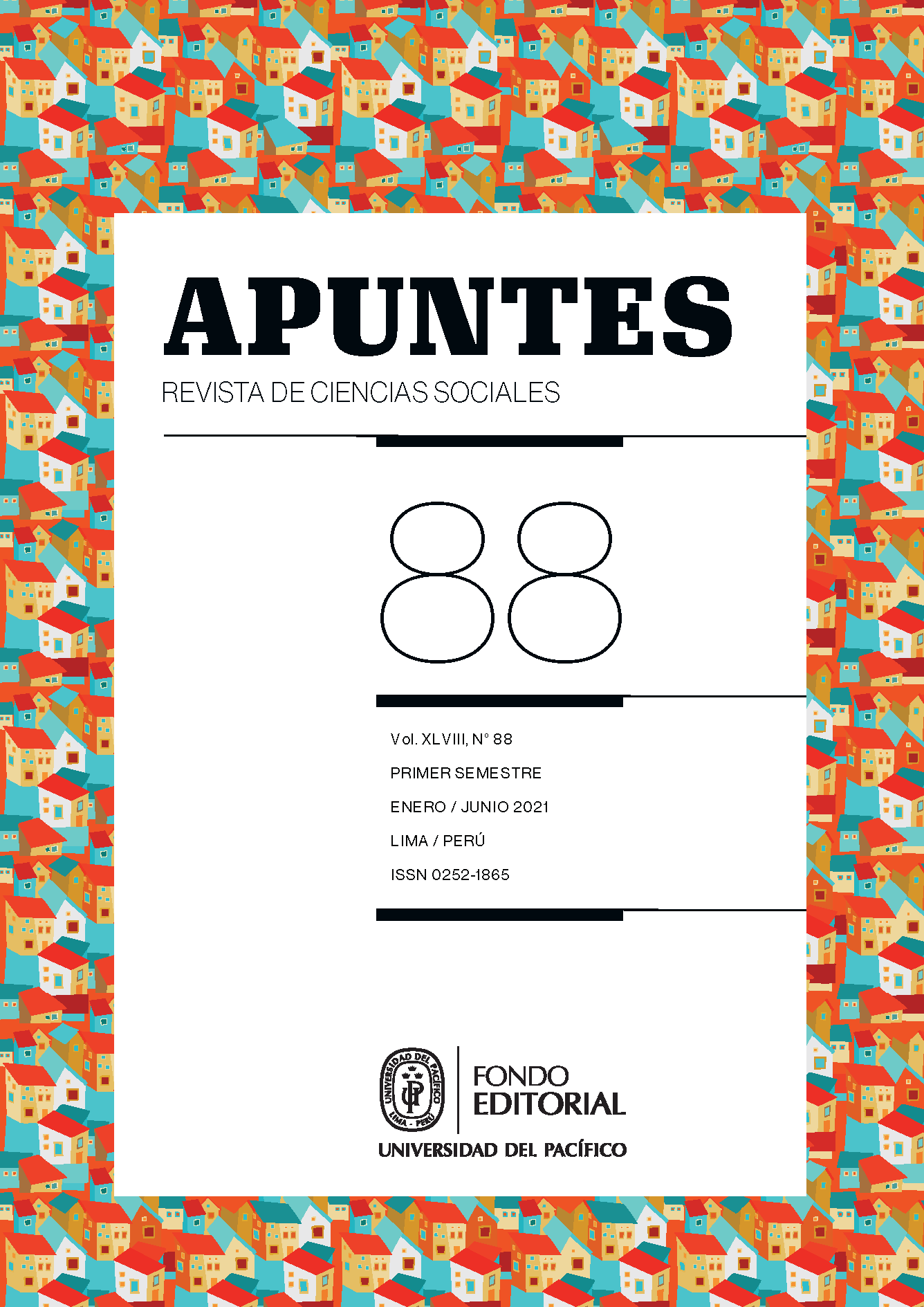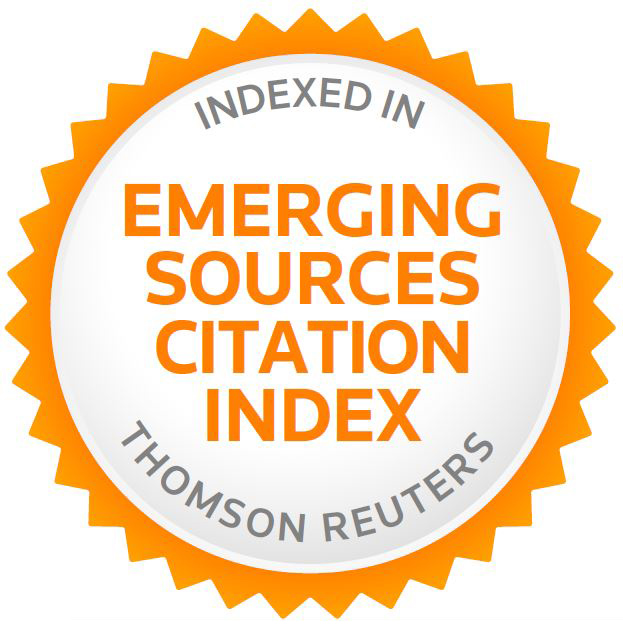Determinantes socioeconómicos y próximos de la mortalidad de niños menores de cinco años en el Perú (2015-2018)
Resumen
El objetivo del estudio fue encontrar los determinantes socioeconómicos y próximos de la mortalidad de niños menores de cinco años en el Perú. Con tal propósito el estudio se centra en el enfoque teórico de Mosley y Chen (1984), y en la metodología econométrica de los modelos de duración semi paramétrica de riesgos proporcionales de Cox y no paramétrica de Kaplan y Meier. En lo referente a los determinantes socioeconómicos, los resultados muestran que los años de educación de la madre, el estatus económico del hogar y las coberturas de salud de la madre disminuyen significativamente el riesgo de muerte de los niños menores de cinco años. Asimismo, los años de educación de la madre tienen un efecto interactivo significativo con el nivel socioeconómico del hogar y el acceso a la cobertura de servicio de salud para influir sobre la supervivencia infantil. En cuanto a los determinantes próximos, la edad de la madre, los intervalos entre naci-mientos, el orden de nacimiento de los hijos, y las instalaciones sanitarias predicen el riesgo de muerte de los niños menores de cinco años.Referencias
Abou-ali, H. (2003). The effect of water and sanitation on child mortality in Egypt The effect of water and sanitation on child mortality in Egypt.
Alsan, M., & Goldin, C. (2019). Watersheds in child mortality: The role of effective water and sewerage infrastructure, 1880–1920. Journal of Political Economy, 127(2), 586. https://doi.org/10.1086/700766
Ayele, D. G., Zewotir, T. T., & Mwambi, H. (2017). Survival analysis of under-five mortality using Cox and frailty models in Ethiopia. Journal of Health, Population, and Nutrition, 36(1), 25. https://doi.org/10.1186/s41043-017-0103-3
Bellido, J. G., Barcellos, C., Barbosa, S., & Bastos, I. (2010). Saneamiento ambiental y mortalidad en niños menores de 5 años por enfermedades de transmisión hídrica en Brasil. Revista Panamerica de Salud Pública, 28(2), 114–120.
Beltrán, A., & Grippa, A. R. (2006). Políticas efectivas para reducir la mortalidad infantil en el Perú. Documento de Discusión. Lima.
Beltran, A., & Grippa, R. (2008). Políticas efectivas para reducir la mortalidad infantil en el Perú: ¿ cómo reducir la mortalidad infantil en las zonas más pobres del país ? Apuntes. Revista De Ciencias Sociales, 62, 5–54. https://doi.org/10.21678/apuntes.62.570
Bicego, G. T., & Ties Boerma, J. (1993). Maternal education and child survival: A comparative study of survey data from 17 countries. Social Science and Medicine, 36(9), 1207–1227. https://doi.org/10.1016/0277-9536(93)90241-U
Biradar, R., Patel, K. K., & Prasad, J. B. (2019). Effect of birth interval and wealth on under-5 child mortality in Nigeria. Clinical Epidemiology and Global Health, 7(2), 234–238. https://doi.org/10.1016/j.cegh.2018.07.006
Breierova, L., & Duflo, E. (2004). The impact of education on fertility and child mortality:Do fathers really matter less than mothers? (Working Paper No. 10513). National Bureau of Economic Research. Cambridge. Retrieved from http://www.nber.org/papers/w10513%0ANATIONAL
Caldwell, J., & Caldwell, P. (1983). Roles of Wowen, Families, and Communities in Preventing Illness and Providing Health Services in Developing Countries. (J. N. G. and S. H.Preston, Ed.), The Epidemiological Transition: Policy and Planning Implication for Developing Countries Workshop Proceedings. Washington, D.C. https://doi.org/10.1007/978-1-137-40063-5_3
Chilupula, N. F. (2020). Demographic and Socio-economic Determinants of Child mortality Zambia: Prospects of Dying Before the Fitth Birthday. https://doi.org/10.13140/RG.2.2.29928.62729
Córdova, P., Román, S., & Galvarro, Z. (2018). Mortalidad De La Niñez Menor De Cinco Años En Bolivia: Análisis De Supervivencia Y Sus Factores De Riesgo Asociados. Investigacion & Desarrollo, 18(2), 73–92. https://doi.org/10.23881/idupbo.018.2-5e
Cox, D. R. (1972). Regression Models and Life-Tables. Journal of the Royal Statistical Society: Series B (Methodological), 34(2), 187–202. https://doi.org/10.1111/j.2517-6161.1972.tb00899.x
Curtis, S. L., Diamond, I., & McDonald, J. W. (1993). Birth Interval and Family Effects on Postneonatal Mortality in Brazil. Demography, 30(1), 33–43. https://doi.org/10.2307/2061861
Dammert, A. (2003). Acceso a servicios de salud y mortalidad infantil en el Perú.
Desai, S., & Alva, S. (1998). Maternal education and child health: is there a strong causal relationship?*. Demography, 35(1), 71–81. https://doi.org/10.2307/3004028
Dietz, K., Gail, M., Krickelberg, K., Samet, J., & Tsiatis, A. (2003). ANALYSIS Techniques for Censored and Truncated Data. (Springer, Ed.), Statistics for Biology and Health (Second Edi).
Finlay, J. E., Özaltin, E., & Canning, D. (2011). The association of maternal age with infant mortality, child anthropometric failure, diarrhoea and anaemia for first births: Evidence from 55 low- and middle-income countries. BMJ Open, 1(2), 1–24. https://doi.org/10.1136/bmjopen-2011-000226
Fotso, J. C., Cleland, J., Mberu, B., Mutua, M., & Elungata, P. (2013). Birth Spacing And Child Mortality : An Analysis Of Prospective Data From The Nairobi Urban Health And Demographic Surveillance System An Analysis Of Prospective Data From. Journal of Biosocial Science, 45(6), 779–798. https://doi.org/10.1017/S0021932012000570
Frost, M. B., Forste, R., & Haas, D. W. (2005). Maternal education and child nutritional status in Bolivia: Finding the links. Social Science and Medicine, 60(2), 395–407. https://doi.org/10.1016/j.socscimed.2004.05.010
Huicho, L., Segura, E. R., Huayanay-Espinoza, C. A., de Guzman, J. N., Restrepo-Méndez, M. C., Tam, Y., … Hernandez, P. (2016). Child health and nutrition in Peru within an antipoverty political agenda: A Countdown to 2015 country case study. The Lancet Global Health, 4(6), e414–e426. https://doi.org/10.1016/S2214-109X(16)00085-1
Huynen, M. M. T. E., Vollebregt, L., Martens, P., & Benavides, B. M. (2005). The epidemiologic transition in Peru. Revista Panamericana de Salud Pública, 17(1), 51–59.
Iram, U., & Butt, M. S. (2008). Socioeconomic determinants of child mortality in Pakistan: Evidence from sequential probit model. International Journal of Social Economics, 35(1–2), 63–76. https://doi.org/10.1108/03068290810843846
Kaberuka, W., Mugarura, A., Tindyebwa, J., & Bishop, D. S. (2017). Factors determining child mortality in Uganda. International Journal of Social Economics, 44(5), 633–642. https://doi.org/10.1108/IJSE-08-2015-0201
Kanté, A. M., Nathan, R., Jackson, E. F., Levira, F., Helleringer, S., Masanja, H., & Phillips, J. F. (2016). Trends in socioeconomic disparities in a rapid under-five mortality transition: a longitudinal study in the United Republic of Tanzania. Bulletin of the World Health Organization, 94(4), 258-266A. https://doi.org/10.2471/blt.15.154658
Kaplan, E. L., & Meier, P. (1958). Nonparametric Estimation from Incomplete Observations Reviewed work ( s ): Source : Journal of the American Statistical Association , Vol . 53 , No . 282 ( Jun ., 1958 ), pp . 457- Published by : American Statistical Association Stable URL : http://www.js. Journal of the American Statistical Association, 53(282), 457–481. https://doi.org/10.2307/2281868
Kato, T., Yorifuji, T., Yamakawa, M., Inoue, S., Doi, H., Eboshida, A., & Kawachi, I. (2017). Association of maternal age with child health: A Japanese longitudinal study. PLoS ONE, 12(2), 1–11. https://doi.org/10.1371/journal.pone.0172544
Mishra, S. K., Ram, B., Singh, A., & Yadav, A. (2017). Birth order. stage of infancy and infantil mortality in India. Journal of Biosocial Science, 1–22. https://doi.org/10.1017/S0021932017000487
Mondal, M. N. I., Hossain, M. K., & Ali, M. K. (2017). Factors Influencing Infant and Child Mortality: A Case Study of Rajshahi District, Bangladesh. Journal of Human Ecology, 26(1), 31–39. https://doi.org/10.1080/09709274.2009.11906162
Mosley, H., & Chen, L. C. (1984). An Analytical Framework for the Study of Child Survival in Developing Countries. Population and Development Review, 10(1984), 25–45.
Mugo, N. S., Agho, K. E., Zwi, A. B., Damundu, E. Y., & Dibley, M. J. (2018). Determinants of neonatal , infant and under-five mortality in a war-affected country : analysis of the 2010 Household Health Survey in South Sudan. BMJ Global Health, 1–15. https://doi.org/10.1136/bmjgh-2017-000510
Neal, S., Channon, A. A., & Chintsanya, J. (2018). The impact of young maternal age at birth on neonatal mortality: Evidence from 45 low and middle income countries. PLoS ONE, 13(5), 1–16. https://doi.org/10.1371/journal.pone.0195731
Nyinawajambo, M. R. (2018). Survival Analysis of Time to Event Data An application to child mortality in Sub-Saharan Africa Region using Their Demographic and Health Surveys. Örebro University School of Business.
OMS. (2018). Objetivo 3: Garantizar una vida sana y promover el bienestar para todos en todas las edades. Retrieved from https://www.who.int/topics/sustainable-development-goals/targets/es/
OPS. (2014). Estrategia de Cooperación con el País: Perú 2014-2019. Lima.
Ribeiro, F., Pimenta, R., Lopes, F., Dalmas, J., & Giroto, E. (2014). Extremes of maternal age and child mortality: analysis between 2000 and 2009. Revista Paulista De Pediatria, 32(3), 381–388. Retrieved from www.spsp.org.br
Rosenberg, D. Y. (2018). Political Economy of Infant Mortality Rate: Role of Democracy Versus Good Governance. International Journal of Health Services, 48(3), 435–460. https://doi.org/10.1177/0020731418774226
Rubio, M., Díaz, J. J., & Jaramillo, M. (2009). población indígena El impacto de PARSalud sobre la calidad de la atención de salud materna entre la población indígena.
Strauss, J., & Thomas, D. (1995). Human Resources: Empirical Modeling of Household ans Family Decisions. Handbook of Development Economics, III(1885–2022).
Sullivan, J., Rutstein, S., & Bicego, G. (1994). Infant and Child Mortality (DHS Comparative Studies N.15).
Tam, Y., Huicho, L., Huayanay-Espinoza, C. A., & Restrepo-Méndez, M. C. (2016). Remaining missed opportunities of child survival in Peru: Modelling mortality impact of universal and equitable coverage of proven interventions. BMC Public Health, 16(1), 1–10. https://doi.org/10.1186/s12889-016-3668-7
Tariku, L. (2019). Effect of Preceding Birth Intervals on child mortality in Ethiopia; Evidence from the Demographic and Health Surveys, 2016. Epidemiology International Journal, 3(1), 1–10. https://doi.org/10.23880/eij-16000118
Wolpin, K. I. (1997). Determinants and consequences of the mortality and health of infants and children. Handbook of Population and Family Economics, 1(PART A), 483–557. https://doi.org/10.1016/S1574-003X(97)80027-X
Yu, F., Yan, Z., Pu, R., Tang, S., Ghose, B., & Huang, R. (2018). Do Mothers with Lower Socioeconomic Status Contribute to the Rate of All-Cause Child Mortality in Kazakhstan? BioMed Research International, 2018, 1–8. https://doi.org/10.1155/2018/3629109

Esta obra está bajo licencia internacional Creative Commons Reconocimiento 4.0.
Apuntes, revista de Ciencia Sociales publica todos sus artículos y reseñas bajo la licencia Creative Commons Attribution (CC BY 4.0) con el objetivo de fomentar el intercambio académico a nivel mundial. Por ello, la obra en cuestión puede ser distribuida, remezclada, retocada, etc., como el autor y los lectores de la misma lo estimen conveniente. La única condición es que se cite a la revista Apuntes, revista de Ciencias Sociales como entidad editora del texto.








.jpg)



